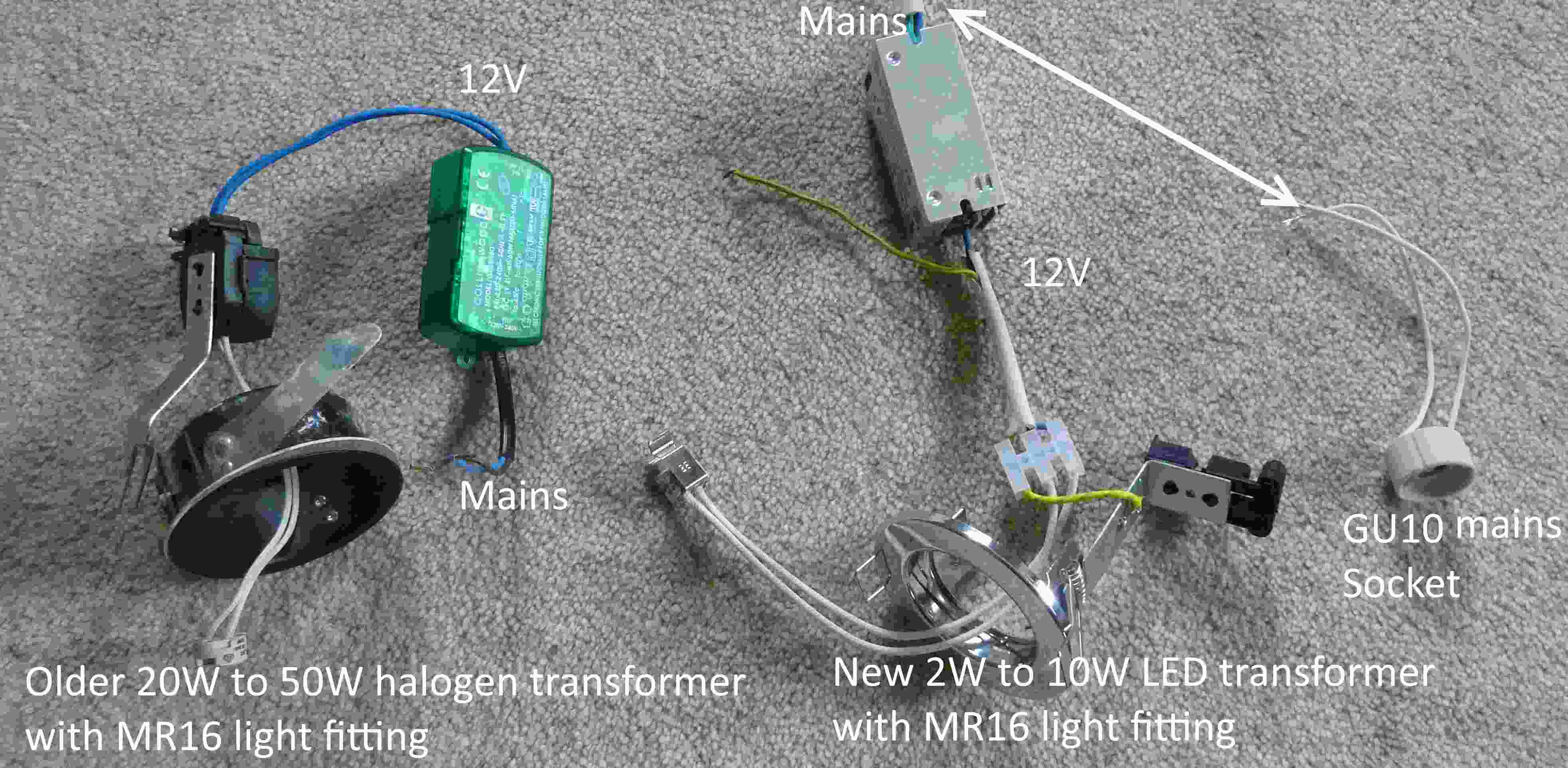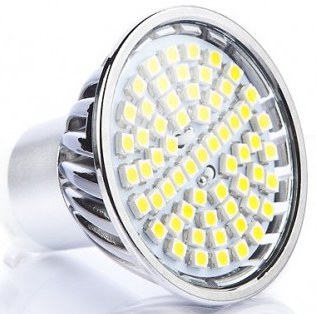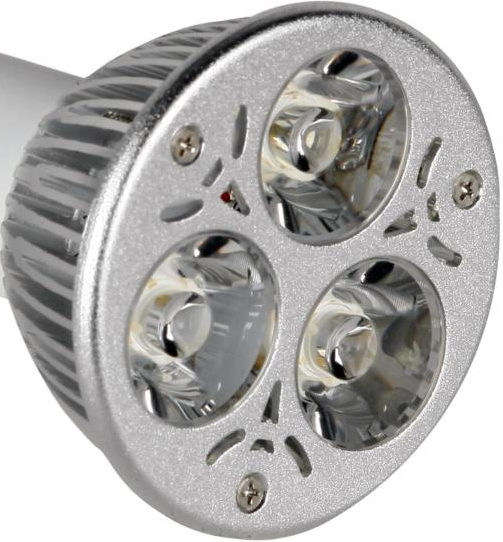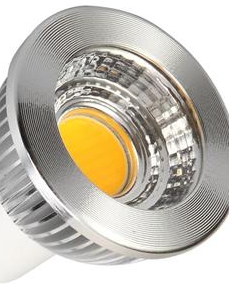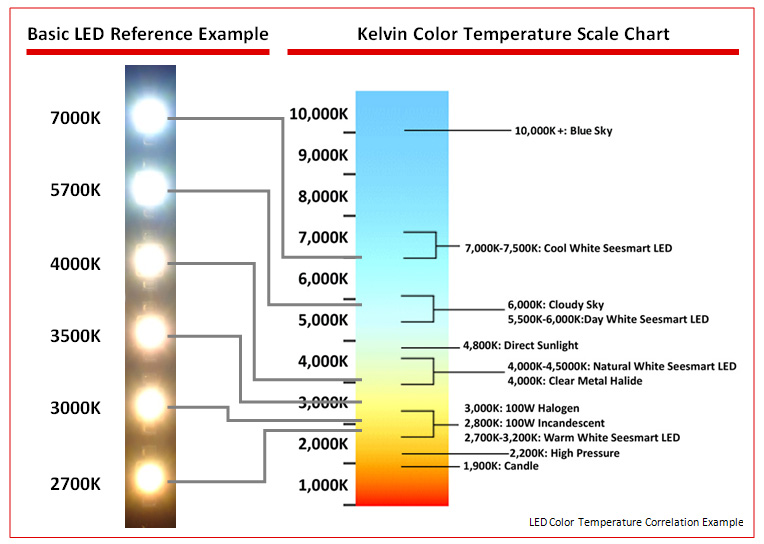Transition Bath’s ‘Try Before You Buy’ LED lighting project allows you to borrow a kit of LEDs from Bath’s Central Library. The kit contains approximately 40 different LED downlighter bulbs (GU10 and MR16) bulbs which you can try in your home before making a purchase.
Modern LED bulbs can be just as bright as halogens but use 10% of the electricity. Unlike halogen bulbs, LED bulbs come with a potentially bewildering range of characteristics which put prospective purchasers off. Low power bulbs from a few years ago have also deterred people from purchasing, but recent LEDs are as bright if not brighter than the halogens they are replacing. This kit hopes to persuade you to switch, and not only save on average £75 from your annual electricity bill but reduce carbon emissions.
The rest of this webpage hopes to guide you through the process, but if you have any further questions not covered here, please contact us at ledlighting@transitionbath.org and we will do our best to help.
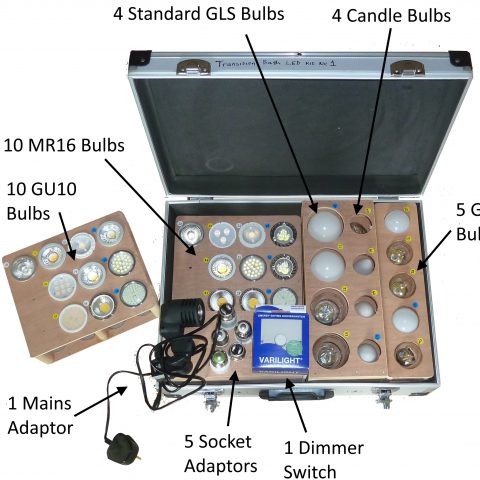
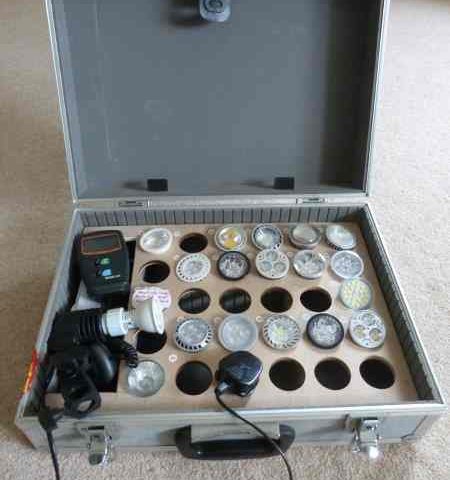
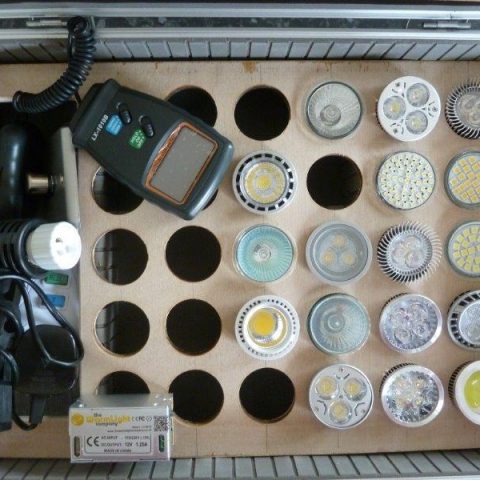
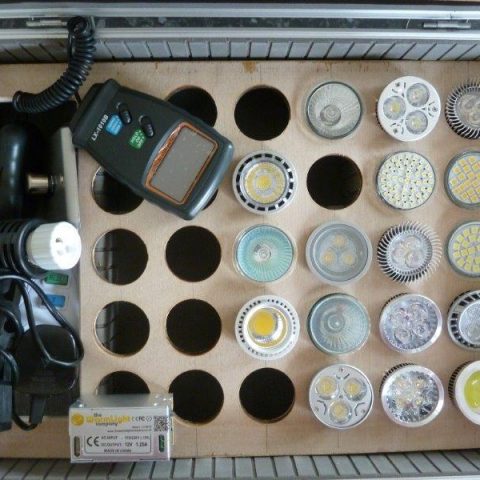
What to do next
- Read: Briefly read through this web page to get a feel for what is required, or if you are in a hurry read the printed instructions provided with the kit
- Book: Book the kit out from the library:
- The kit is part of the library ‘Special Loans Collection’ which means it can’t be booked online and cannot be moved to other libraries
- To book the kit phone Council Connect on 01225 39 40 41 or go to Bath Central Library and ask to book the ‘Transition Bath LED Try-before-you-buy kit’
- You will need your library card number to book the kit
- Try to book the kit for the minimum period possible to maximise access to the kit as we are expecting significant demand and we would like as many people as possible to switch to LED lighting; the maximum booking allowed is for one week
- Collect: Go and pick the kit up from the library:
- Bring your library card with you
- The kit weighs 9 kg, the case has a comfortable carrying handle but if you are not confident about carrying 9 kg over home please make arrangements to pick it up by public transport or by car (the kit has already been carried tens of miles by hand, so its not that bad!)
- Try: Having got the kit home, go through the “LED Kit Bulb Selection Tool” below to decide which bulbs fit your criteria and try them in your light fittings, or use the provided standalone socket (GU10 bulbs only). If you find the guide below too long or complicated, just try some of the example bulbs from the kit to see which you like?
- Buy: The kit currently contains LEDs from 4 suppliers: Light Rabbit, LEDHut, LEDStop and Well-Lit which we recommend for the level of their customer service, quality of their LEDs and product guarantees
Background – Safety Precautions/Legal
Who can do work and where
The regulations for this have changed recently (April 2013) and are covered by Part P of building regulations. Advice on the web, typically from electricians tends to obfuscate the rules.
Generally you are allowed to do the following without being qualified:
- Change light bulbs
- Replace dimmer switches
- Replace transformers
- Do minor alterations to wiring in most areas of the house apart from bathrooms
You are not allowed to do alterations in the following area
- In bathrooms and wet rooms close to sources of water (the rules are explained in this diagram and below)
Safety Precautions
Always follow these precautions:
- Avoid looking directly at the LED lights when they are on, they can be very bright
- Before removing halogen bulbs, turn them off for more than 15 minutes to allow them to cool off – they can be very hot. If you are planning on putting them back in, use gloves to handle them as any grease on the surface reduces their life (this is not a problem for LEDs)
- Always turn lights off at the wall before replacing bulbs, and the lighting circuit off at the fuse box
- To ensure you that you have switched off the correct lighting circuit, switch the lights on, switch the relevant circuit off at the fuse box, then check the lights have gone off, and then to be 100% safe switch turn the light switch off
- If you are uncertain use a mains tester screwdriver to check whether a circuit is live
- If you still unsure about what you are doing contact us: ledlighting@transitionbath.org or employ a qualified electrician
- Never assume just because the existing wiring in your home was probably installed by a qualified electrician that it is safe and legal – regulations change over time
Areas to be careful
- Insulation around light fittings: If when you come to replace your lights you find the ceiling void around the fittings is insulated e.g. in a bedroom. To avoid the risk of fires you need to ensure there is a suitable fire safe box around the light fitting and the light fitting is fire rated. Fire rated light fittings cost about £8, and boxes to separate them from insulation about £5. In theory by installing LED lights you should reduce the fire risk as they produce 10 times less heat, but they are still a risk
- Bathrooms and wet areas: the rules are complicated; please check the diagrams in this link . Fittings, outside the wet zones (see diagrams) should generally be IP65 rated, the rating should be specified on the unit, if in doubt contact us or a qualified electrician. New replacement IP65 rated fittings cost from about £8 each.
If in doubt always either contact us or a qualified electrician.
Further reading:
- IET Installing Downlighters Safely – provides background on the rules of Downlighters in ceiling voids with insulation
- Building Regulations Part P
- Diagram of bathroom zones and fitting requirements
Halogen downlighter bulbs typically consume 50 watts of electricity; their LED replacements consume 5W. So the power saving is 45W per bulb, or 0.045 kW. To work out how much money you save annually you need to first calculate the number of units of electricity (kWh) used, which you do by multiplying the power saving by the number of hours the light is on per year. So for example if you light is on for 2 hours per day, your saving in kWh is 2 hours x 365 days/year x 0.045 kW = 32.85 kWh. Each kWh of electricity costs about 16p, so the monetary saving is 32.85 kWh * 16p = £5.26. You then need to multiply this by how many bulbs you are using. This is summarised below.
To estimate your annual savings to do the following calculation:
Saving in kWh = Number of lights x Hours on each year x Power Saving per bulb (typically 0.045 45W/1000)
Saving in £ = Saving in kWh x Costs of Electricity (£0.16 per kWh)
So for example if I was replacing 12 bulbs which are on for 2 hours per day 365 days per year:
Saving in kWh = 12 bulbs x 2 hours x 365 x 0.045 = 394 kWh
Saving in £ = 394 kWh x £0.16 = £63
How much will I save over 1 year, the life of the bulb?
Manufacturers generally quote a 25,000 hour life for an LED bulb, although our experience suggests this might be an overestimate and 5,000 hours might be more realistic.
| kWh | £ | kWh | £ | |
| 1 year |
33 |
£5 |
394 |
£63 |
| 5000 hour lifespan |
225 |
£36 |
2700 |
£432 |
| 25000 hour lifespan |
1125 |
£180 |
13500 |
£2,160 |
As you can see, over the lifespan of the bulb, depending on how long you believe it will last you will save between £36 and £180 per bulb, which is significantly more than the cost of the bulb!
The calculator makes some adjustments for purchasing replacement halogen lights which don’t last that long, so the results provided above might be slightly different from the calculation described in the previous section.
Summary
When you purchase a halogen bulb there is very little choice, typically the choice is between a 35 watt and a 50 watt bulb and if you are really lucky a choice of ‘beam angles’. When you select an LED bulb you are presented with a plethora of criteria:
Generally only the first five criteria on the list – GU10 or MR16, colour temperature, beam angle, depth of bulb and dimmable are critical when selecting a bulb. Generally bulbs rated 4.5 watts or above should be bright enough. Hopefully the range of bulbs in the kit should facilitate you in making this decision?
The remainder of this section covers some of the criteria in more detail.
GU10 and MR16 are the names used to describe the two main types of downlighter LED.
GU10s
The GU10 is powered directly from the mains and comes 2 rounded nurled connectors as per the example to the right.
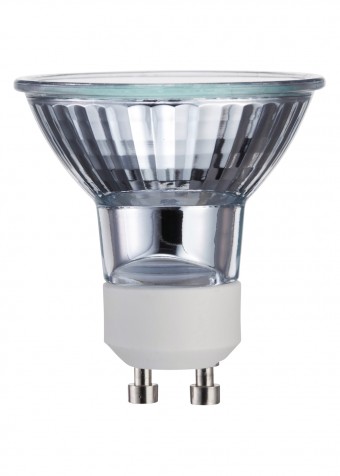 The LED chips which provide the light all run off low voltage, so the for the GU10s the neck of the bulb contains a small transformer, which transforms the mains voltage down to a lower ~5V DC. This is largely why some GU10s are deeper/longer (up to 85mm) than their equivalent halogen’s as they need extra space to fit in the transformer. Most fittings allow some latitude in bulb depth but you will need to check this against your light fitting. To some extent a longer necked bulb might mean a more reliable bulb as the electronics in the transformer might have more space and therefore will get less hot and last longer. Having said that most manufacturers are now managing to fit LEDs and their transformers into packages very close to the 50mm of the halogens they are replacing.
The LED chips which provide the light all run off low voltage, so the for the GU10s the neck of the bulb contains a small transformer, which transforms the mains voltage down to a lower ~5V DC. This is largely why some GU10s are deeper/longer (up to 85mm) than their equivalent halogen’s as they need extra space to fit in the transformer. Most fittings allow some latitude in bulb depth but you will need to check this against your light fitting. To some extent a longer necked bulb might mean a more reliable bulb as the electronics in the transformer might have more space and therefore will get less hot and last longer. Having said that most manufacturers are now managing to fit LEDs and their transformers into packages very close to the 50mm of the halogens they are replacing.
MR16s
MR16s have a slightly different connector – 2 pointed ‘prongs’ and are powered by 12V (DC). 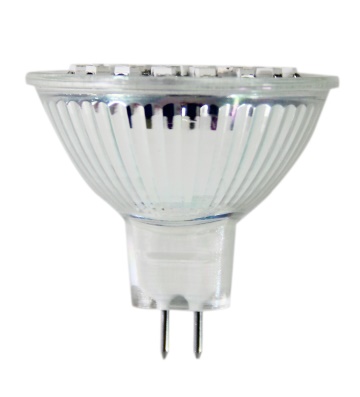 Rather than being supplied directly from the mains, these bulbs are connected to the mains via a transformer, which you is normally to be found in your ceiling void within a short distance of the light fitting.
Rather than being supplied directly from the mains, these bulbs are connected to the mains via a transformer, which you is normally to be found in your ceiling void within a short distance of the light fitting.
Unfortunately many existing transformers are designed only to work down to 20 watts as they are designed to work with 50 watt halogens. As a result they don’t work with all LEDs which typically consume 5 watts. Luckily most modern LED MR16s can spoof the old transformers into working at a lower wattage but its very difficult to tell until you actually try the LEDs in the light fitting – this is one of the major benefits of our ‘try-before-you-buy’ kit! The most normal symptom of a transformer not being compatible with an LED is the light either flickers or doesn’t come on at all.
If you do find that none of the bulbs work with your transformers, please let us know: ledlighting@transitionbath.org and we will do our best to help. The most common solution if they don’t work is to rewire the lights with new LED compatible transformers. We would however advise that you consider changing the light fitting from a MR16 to a GU10, as it likely to be a cheaper solution, there is less wiring involved and we have noticed that the GU10s are more efficient than the MR16s as it appears that in general both old and new transformers consume 1 to 2 watts beyond the wattage quoted for the bulbs, reducing some of the benefit of switching to LEDs.
The image below tries to summarise what is involved if you find your existing transformers won’t work with any of the LED bulbs:
Your original transformer will probably look something like the one of the left, you then have a choice of replacing the transformer with an LED compatible transformer (middle, unwire 2 x 3 wire and rewire ~ £8 for transformer) or to replace the MR16 socket with a GU10 mains socket and wire directly to the mains removing the transformer from the circuit altogether (unwire and rewire 1 x 3 wires £1 for socket, £0 or 1 for a junction box). If you run into this situation we are happy to provide advice.
Unlike halogens which are in general ‘dimmable’ not all LEDs are dimmable, and even if they are they may not be compatible with the dimmer switch you have in your room. So when you are choosing your LED bulbs make sure you choose a dimmable LED if you have a dimmer switch and check whether than dimmer switch is compatible with the LED you purchase.
Testing compatibility between bulbs and dimmer switches can be difficult because it might not be until you have replaced all your bulbs that you find out whether the switch is compatible or not? The problem arises because some of the older dimmer switches only for example work between 50W and 1000W, which is fine if you have 10 x 50W halogen bulbs, but if you replace them with 10x 4W LED bulbs drawing 40W, then the switch is unlikely to work. In addition the majority of LEDs only work with ‘trailing edge’ dimmers and most halogen dimmers are ‘leading edge’.
We have supplied a LED compatible dimmer switch with the kit if you have time to temporarily rewire your switch to test, but don’t use the dimmer to drive any halogens as its not compatible and not powerful enough, and is likely to burn out! In general if you want to dim the lights we would advice you factor in spending between £15 and £25 on the replacement dimmer switch, and ask your LED bulb supplier to also supply a compatible dimmer switch at the time of you purchase. This web page provides an explanation on how to select the right power range for your dimmer.
Replacing your dimmer switch is very straightforward, you need a small screw driver, turn the mains off in your home at the fuse box and it should take under five minutes, please don;t let it put you off switching to LEDs? If you are uncomfortable rewiring, either employ a qualified electrician, or ask a friend or relation. The video below demonstrates changing a dimmer switch:
Warning: Feedback from one of the users of the kit: it may be that you try a single LED in parallel with existing halogens and it appears to work, you then order and install a complete replacement set and they flicker when you dim the lights. This is most likely because your existing dimmer only works with a certain load (i.e. the high load of the halogens). In this circumstance you will need to replace your dimmer switch with an LED compatible trailing edge dimmer like the Varilight V-Pro supplied with the kit.
LED Types: SMD, normal or COB
There are three main types of LED packaging:
There isn’t really much difference between the 3 types of bulbs, except the SMD bulbs generally onlt come in a wide ‘beam angle’ (see later on this page).
Brightness, which is the amount of light given out from a bulb, is quantified in lumens. Most LEDs will specify an output in lumens. To replace a 50 watt halogen you need an LED with at least 400 lumens of output. However, based on our experience some LED suppliers significant overstate their output in lumens. Given the efficiencies of most LEDs are similar, probably the simplest rule of thumb is to pick an LED with a power consumption of at least 4.5 watts, and this should provide enough light to replace a 50 watt halogen – but test this using the example bulbs in the kit. But, if you intend purchasing a bulb over 7 watts, you might find it is actually overly bright!
The kit comes with a ‘light meter’ which measures brightness in lumens per square meter (LUX). You can use this to check whether the bulbs are bright enough in your rooms using the light meter supplied with the kit (instructions below). The brightness is affected by the spacing of the lights in the ceiling, their beam angle (intensity) and how far from the working surface they are. The wider the beam angle the more area the light coming out of the bulb has to cover and therefore generally the less intense the lighting level is. This is however complicated because wider beam angles lights will create more overlaps with neighbouring bulbs reinforcing their output.
The light meter supplied with the kit will provide some indication of how much light is provided by your existing lights, in general you should be looking for about 300 to 400 LUX at worktop height. However its very difficult to compare LUX as it depends on you eyes’ sensitivity to different light frequencies and on overall lighting levels – you eyes change their sensitivity to different wavelength’s of light depending on the overall brightness. You will find the light meter is tuned for a particular distribution of wavelengths (CIE/ISO photomic curve) which might not match your perception of relative brightness, in general you might find it underestimates the brightness of warmer coloured bulbs.
Beam Angle
https://www.easy-lightbulbs.com/images/guides/beam-angle/45.gif 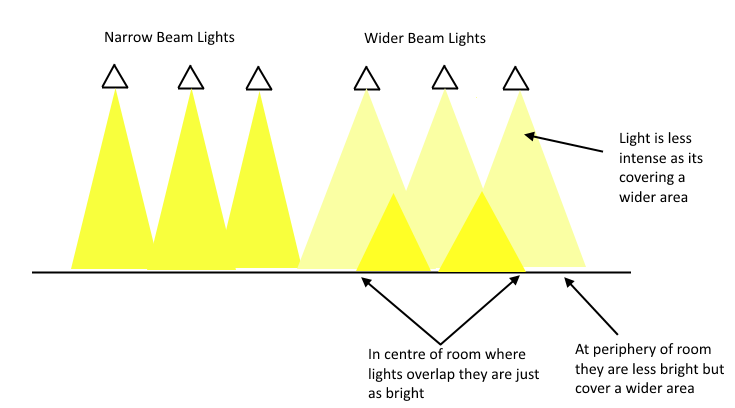
To further complicate the decisions the intensity of the light varies by 50% between the centre and outside of lights, for both halogens and the differing types of LEDs. Therefore when checking beam angles it is probably best to test empirically using the examples in the kit, it is very difficult to do it on theoretically. You should be particularly careful if you have work surfaces which need illuminating on the periphery of a room.
Colour Temperature
LED bulbs vary in ‘colour temperature’ from ‘Warm White’ (yellow) through ‘Day White’ (like daylight) to ‘Cool White’. These temperatures are generally quantified in ‘Kelvin’ (K), so a ‘Warm White’ bulb might correspond to 2700K to 3000K. Halogen bulbs are ‘warm’ and about 3000K. Colour is a personal choice but generally you want bluer colours in ‘active’ rooms like a kitchen and warmer yellower colours in ‘relaxing’ rooms like lounges and bedrooms. The chart below illustrates this:
Generally warmer LEDs are slightly less bright than colder/bluer LEDs because the warmer LEDs are produced by coating the whiter LEDs with phosphorus which emits warmer colours but also absorbs some of the output from the white LED making it less efficient.
Our general advice is that if you are going to spend more than £5 on a bulb look for a guarantee of between 3 and 5 years, these are commonly available from on-line suppliers and will ensure you benefit most from your investment. Although most LEDs are quoted with 25,000 to 50,000 hour life spans (compared to 2,000 hours for halogens) we have found that some batches of LEDs fail before that time. We also understand that the 25,000 hours is more to do with how quickly the brightness of the LED degrades than how long the bulbs last before failing. In our experience LED bulbs appear to be lasting between 5,000 and 10,000 hours depending on how you use them, and their reliability seems to have improved signifcantly over the last 2 years as the industry matures.
Given each bulb will probably save you £5 per year in electricity costs and if you spend less that £10 on each LED then a 3 to 5 year guarantee is worth paying for, even if the bulbs are slightly more expensive.
As a charity, Transition Bath is not prepared to recommend individual suppliers but we can provide some general advice.
Ebay: generally the cheapest source. The cheapest suppliers are generally Chinese importers so you can’t 100% guarantee they meet the claimed specs or are 100% electrically safe. If you want to save money, and are confident electrically then going to ebay is the most cost effective solution. This video demonstrates an electrically unsafe LED bulb bought in the UK. We have found that you can’t always trust the specifications of LEDs found on ebay, many overstate their light output in lumens.
DIY stores: they are generally slightly more expensive than online suppliers and their lighting can be a little underpowered (low lumens). We have include some LEDs from Homebase for you to try.
Specialist online suppliers: more expensive than ebay, but they generally come with a 3 to 5 year warranty and you have probably be slightly more confident of their claimed specifications. We have included a number of examples in the lit from these suppliers. Online specialist suppliers can also provide expert advice over the phone. The additional guarantee is important because occasionally you can get a batch of LEDs which are unreliable, but a 3 to 5 year guarantee avoids this problem, you should also have paid for the paid for the bulbs in saved electricity by the time a 3 year guarantee is over. We have provided link to the online suppliers against each of the supplied bulbs, some of the suppliers are offering a discount to people who have borrowed the Transition Bath kit; if you make use of this discount it would be great if you could donate the difference to us, so we can use it to find future projects or supply similar LED lighting kits to other libraries in the area.
General points:
- It’s difficult to be certain of the quality of any LEDs whether purchased online or at a store – hence why we have supplied the kit with a choice of bulbs for you to try
- How much should I spend per bulb? Prices start from about £1, although most typically are in the £5 to £10 range. Economically over its 25,000 hour life an LED will save you at least £200 but a. it might not last the 25,000 hours and b. LED lighting will get even cheaper over time and more efficient, so over investing in expensive bulbs may not be efficient. We would recommend you don’t pay more than £15 for a bulb – most high spec bulbs cost around £10, and you are not gaining much by spending any more than that.
- During manufacture LEDs are ‘binned’ – which means they are tested and grouped by the quality of their light output – cheaper bulbs may use LEDs from lower quality bins, meaning the quality of the light output is worse, although this difference can be difficult to perceive
The table below lists all the LED bulbs in the kit. You can use it to narrow down your choices, so for example if you are only interested in warm white GU10 bulbs you can click on the top of the relevant columns and filter the table down to the types of bulbs you are interested in. The number at the start of the first column is the label we have put on the bulb in the kit.
GU10s:
MR16s:
This allows you to compare 2 bulbs, it pulls out a displays a selection of key criteria for two bulbs side by side and also displays graphs of the intensity of the beams across a horizontal plane (1.5 metres from bulb to surface). Click on the drop down menus at the top of each of the columns to select and compare bulbs.
Every enclosure is slightly different, many have clips like this example video which you can squeeze to release the bulb. The bulb with its socket and wiring then drop down out of the remove allowing you to remove the bulb.
Please let us know if your lamps have a different method for removing the bulb – a photo would be useful, then we can add it to these instructions.
Replacing a dimmer switch
If you struggle to find any LED lights which will work with your dimmer switch – typically the bulbs flicker then you will need to replace the dimmer switch. LED compatible dimmer switches should be ‘trailing edge’ and are generally more expensive (£15+). We have included a Varilight V-pro dimmer switch with the kit, which you are welcome to try to test compatibility – but be careful as it is only rated at 400W, and so if you leave the halogen bulbs in you can’t drive more than 8 of them(8 x 50W = 400W), remove any excess halogen bulbs before starting.
This video explains and demonstrates the procedure – which takes 3 minutes! The dimmer switch we have supplied is metal so you will have to connect up the earth cable as well – so it might take you 4 minutes. If you don’t have a mains tester for checking whether the terminal is live we recommend to be safe you turn off the whole mains for your house at the switchbox.
Background Reading
- “Converting to LEDs lights: everything you need to know” , Guardian, 28 Mar 2014
- IET Installing Downlighters Safely
- Transition Town Lewis: Switching to LED Lighting
Please let us know if you come across any other useful articles and we will add them to the list?
The kit – contents
The kit contains:
- Some brief instructions, referring you to this website
- A light meter for checking light levels in your home
- A hand held GU10 light with RCD socket for testing individual lights without having to replace ones in your ceiling (for testing before testing in the ceiling)
- A Varilight V-pro LED compatible dimmer switch
- An LED compatible MR16 transformer
- A selection of GU10 and MR 16 lights as per this list
